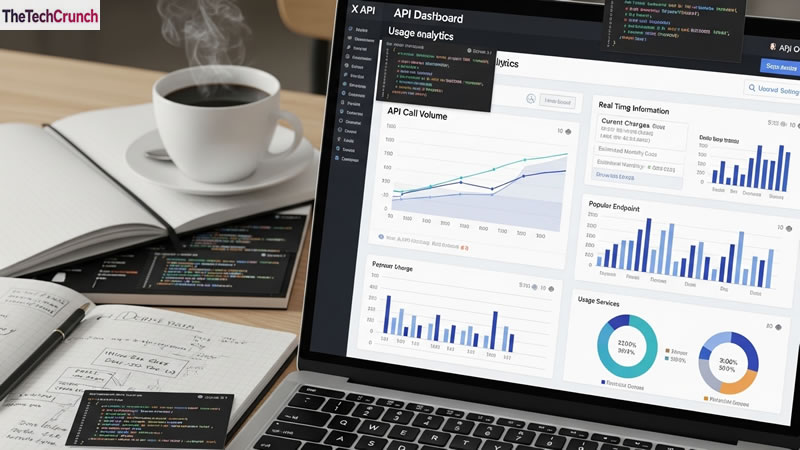X, formerly known as Twitter, is once again in the spotlight. The company is now testing a new pay-per-use pricing model for its API. This model represents another shift in how developers and businesses interact with X’s data. The move comes after several earlier changes to its API access policies. Elon Musk’s vision for monetization continues to shape how X functions for third-party developers.
What the Pay-Per-Use Model Means
Under the pay-per-use model, developers will pay based on their actual API usage. This means instead of a monthly subscription, users will be charged for the number of API calls or requests they make. It gives flexibility to small developers and startups who only need limited access. It also allows larger businesses to scale usage according to their needs.
Stay up to date with the latest technology in TheTechCrunch. This covers artificial intelligence, mobile and web apps, modern things, cybersecurity, and general technical news. From AI’s successes to chat and generative tools. Such as smartphones, laptops, and wearables’ special reviews. TheTechCrunch gives an insight into this case.
This model focuses on usage efficiency. Developers can now access specific features without committing to high-tier plans. This move might make the platform more accessible for those who were earlier priced out of using the API.
Background of X API Changes
X’s API has undergone several transformations in the past few years. Before Elon Musk’s ownership, the Twitter API was mostly open and free for developers building small apps, bots, and research tools. But after the rebranding to X, the company introduced paid tiers in 2023. These plans restricted access for free users and introduced monthly fees that many considered high.

The new pay-per-use test appears to be an attempt to find a middle ground. It acknowledges that not all users have the same level of need. The model could attract developers back to the platform who left after the earlier price hikes.
Why X Is Making This Change
The main reason behind this new model is revenue generation. Since Elon Musk took control of X, the company has been searching for ways to make the platform more financially stable. Advertising revenue has dropped since the rebrand. Therefore, monetizing the API offers a new and potentially reliable income source.
Moreover, a pay-per-use system reduces misuse. Some users in the past exploited free access for spam or scraping data. With this model, every API call has a cost, which discourages bad actors. It also ensures that API access is being used responsibly.
Benefits for Developers
The pay-per-use pricing model offers clear advantages for developers. For small developers, this model provides an affordable way to experiment with the API. They can test features, build prototypes, or access real-time data without committing to large payments.
For enterprise-level users, it brings flexibility. They can pay according to data needs, adjust usage dynamically, and avoid paying for unused capacity. This approach aligns with the growing global trend of usage-based pricing in technology platforms.
Developers who use X’s data for analytics, social listening, or app integrations could benefit most. The flexibility might also encourage more startups to innovate around X’s ecosystem.
Challenges and Concerns
However, there are challenges associated with this new pricing experiment. Some developers worry about unpredictability in costs. If the pay-per-use charges are not transparent or properly capped, small projects could face unexpected expenses.
There is also concern about whether this system will truly replace existing plans or be offered as an additional option. If both systems coexist, developers may find it confusing to choose the right plan.
Moreover, some fear that even a pay-per-use model might still be expensive. The company’s history with sudden pricing changes has made developers cautious. Transparent documentation and fair pricing will be key to building trust again.
Comparison with Other Platforms
Other major social platforms also have usage-based pricing models for their APIs. For instance, Google Cloud, Meta, and OpenAI follow similar pay-per-use approaches. The model allows developers to scale costs according to their business size.
By moving in this direction, X aligns itself with modern developer economy practices. However, those platforms also provide strong support, clear billing, and predictable rate limits. To compete, X will need to ensure similar transparency and technical reliability.
Impact on Businesses and Apps
This change will affect many third-party apps that depend on X data. Tools for sentiment analysis, influencer tracking, and social media dashboards rely heavily on API access. If the pricing is reasonable, these apps may thrive again after earlier struggles.

On the other hand, if pricing remains steep, some smaller players may still avoid integration. The overall success of the model will depend on how balanced the pricing structure is.
Businesses may appreciate the ability to pay only for what they use. It helps them manage budgets more efficiently. The flexibility could also make API integration more practical for seasonal campaigns or temporary projects.
Strategic Timing of the Test
The timing of this new test is not random. X has been under pressure to show signs of stability. Introducing this model could signal that the company is listening to developer feedback.
This trial phase allows X to gather data about user behavior, usage levels, and revenue patterns. It also provides insights into how developers value the platform’s data. Based on the feedback, X might expand or modify the model in the coming months.
The Future of X’s API Economy
The success of the pay-per-use API model will shape X’s broader ecosystem. If implemented correctly, it could rebuild trust with developers and open new growth opportunities.
X aims to become an “everything app,” combining communication, payments, and media. A flexible API model is essential for achieving this vision. It enables third parties to build services that connect seamlessly with X’s core platform.
Explore a complete hub for the latest apps. Smart things and security updates online. Ranging from AI-operated solutions and automation tools. TheTechCrunch offers in-depth articles, comparisons. And specialist analysis is designed to understand the rapidly changing technology. Whether you are keen on robotics, data protection, or the latest digital trends.
As APIs remain the backbone of digital innovation, X’s experiment could influence other social media companies. The shift shows how platforms are evolving from open ecosystems to structured, revenue-focused systems.
Conclusion
X’s testing of a pay-per-use API pricing model marks a significant shift in its developer strategy. It reflects the company’s effort to balance accessibility with profitability.
For developers, the change could bring flexibility and fairer costs. For X, it could create a sustainable revenue stream and reduce misuse. But transparency, affordability, and reliability will determine whether the model succeeds.
As the test unfolds, the tech community will watch closely. This move could redefine how social platforms monetize data while keeping developers engaged in their ecosystems.
Here Are More Helpful Articles You Can Explore On TheTechCrunch:
- Claude Code Web App: Anthropic’s Next Step in AI Coding
- WhatsApp Changes Its Terms to Bar General Purpose Chatbots from Its Platform
- Too Burned Out to Travel? This New App Fakes Your Summer Vacation Photos for You
- Wikipedia Says Traffic Is Falling Due to AI Search Summaries and Social Video
- Silicon Valley Spooks The AI Safety Advocates
- Waymo DoorDash Partnership: A New Chapter in Autonomous Delivery
- Reddit Expands Its AI-Powered Search To Five New Languages
- General Intuition AI: Pioneering the Future of Spatial-Temporal Reasoning


